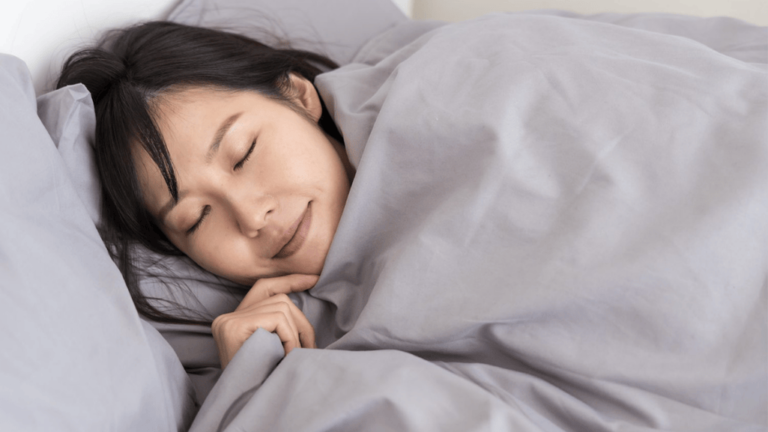As toddlers grow, they hit many milestones, including the time for their first pillow. Parents often ask when it’s safe to hand over a toddler pillow. The American Academy of Pediatrics warns against using pillows before age two, especially if kids are still in their cribs.
Following toddler pillow safety guidelines is key to avoid dangers. These include risks of suffocation or a child escaping their crib with a pillow’s help. Parents should watch for signs their child is ready for a pillow. This readiness might show when a toddler’s bed changes or when they start holding soft items close.
Key Takeaways
- Pillows are not recommended for children under one year to avoid suffocation risks.
- Wait until the SIDS risk period ends after the first birthday to introduce a pillow.
- The best age for a toddler pillow is typically when they move to a toddler bed.
- Look for signs of readiness for a pillow, such as seeking comfort from soft objects.
- When introducing toddler pillows, opt for a small, flat, and firm design for safety.
- Avoid rush in introducing a pillow; most toddlers sleep well without them at first.
Milestone Moments: Introducing Your Child to Their First Pillow
Starting your toddler on a pillow is a big deal. It marks a step towards independence and better sleep. When moving from a crib to a toddler bed, adding a pillow is significant.
Understanding the Importance of Proper Timing
The right time to use a toddler pillow is crucial. It’s best to wait until you see your child is ready, like using make-shift pillows. Research shows that giving a pillow at 18-24 months can help sleep better.
Transitioning from Crib to Toddler Bed as a Key Indicator
Changing to a toddler pillow goes well when moving from a crib to a bed. This usually happens when kids are 2 to 3 years old. The pillow should be firm for neck support but also soft for comfort.
Keep an eye out for any discomfort or sleep problems. This could mean the pillow needs adjusting. Choosing the right pillow helps your toddler’s sleep stay healthy.
When to Give Toddler Pillow: Safety Guidelines and Age Recommendations
Finding the right time to introduce a toddler pillow is very important. The American Academy of Pediatrics warns against using pillows for children under 2. This is because of the risk of Sudden Infant Death Syndrome (SIDS) and suffocation.
Toddlers are advised to wait until they move from a crib to a toddler bed, which usually happens around their third birthday. Changing to a toddler bed lowers the risk of SIDS, making this a safer time to switch to a pillow.
Choosing the right pillow is key for your child’s safety. The pillow should be flat, firm, and thin. This ensures it supports their head without straining their neck or back.
| Age | Recommendation |
|---|---|
| Under 1 Year | No pillows. High risk of suffocation and SIDS. |
| 1-2 Years | Wait until transitioning to a toddler bed to introduce pillows. Still not recommended until 2 years old. |
| Post 2 Years | Use a small, firm, hypoallergenic pillow after switching to a toddler bed. |
Watch how your child sleeps to know when they are ready for a toddler pillow. This careful observation should show if they’re prepared for it or need more time. Moving to a toddler pillow is a natural step that should enhance their sleep comfortably and safely.
Recognizing the Signs Your Toddler Is Ready for a Pillow
Finding the right time to add a pillow to your toddler’s sleep is key for parents. By watching how your child acts, you can tell when they need more comfort at night. This helps you know when they are ready for this step.
Seeking Comfort in Substitute Objects
You might see your child looking for comfort using things like stuffed animals or blankets in bed. This shows they want more support. It’s like they know what can make their sleep better. Introducing a toddler pillow that’s just the right size can improve their sleep even more.
Verbal Requests: When Your Toddler Asks for a Pillow
Noticing when your child starts talking about wanting a pillow is another sign. It shows they might be ready to move on to new comfort levels. These requests often come from seeing others use pillows or a natural step in their growing needs.
When it’s time to pick a pillow, go for safe and comfy options. Hypoallergenic and down pillows are great choices. They are good for allergies and provide gentle but sturdy support. Start using the pillow during naps to help your toddler get used to it.
It’s important to watch your child’s reaction to the pillow closely at first. Look for any discomfort or if they are not liking it. These signs can guide you to make any needed changes. This strategy will make sure the pillow is helping, not causing problems.
Choosing the Right Pillow: Prioritizing Health and Comfort
Choosing the best toddler pillow means focusing on health and comfort. Pick a pillow that meets a child’s growing needs. It’s important to choose the right materials and softness. This can help a toddler sleep well and develop properly.
Selecting Non-toxic Materials for Toddler Pillows
It’s vital to look for non-toxic materials in a toddler pillow. The Environmental Working Group recommends natural materials. Their use lowers the risk of exposure to harmful chemicals. Wholesome Linen offers pillows made of hypoallergenic, antibacterial materials. This creates a safer sleep space, avoiding allergens and toxins.
Finding the Balance Between Firm Support and Comfort
Balance is key for proper spinal alignment and comfort. Experts advise on pillows that are both supportive and soft. This mix avoids sleep issues and aids your child’s physical well-being.
Consider the right pillow size too. The best sizes for toddlers in the U.S. are usually 13×18 or 12×19 inches. These sizes support the head and neck properly without raising them too high.
When it comes to introducing a new pillow, start during naptime. Watch for comfort and how the child reacts to the pillow. This way, any needed changes can be made before using it for a whole night. This careful approach finds the ideal firmness for your toddler’s sleep.
| Feature | Importance |
|---|---|
| Non-toxic Materials | Essential for avoiding exposure to harmful substances |
| Firm Support | Crucial for proper head and neck support |
| Comfort | Important for uninterrupted sleep |
Choosing the right toddler pillow is more than just a purchase. It’s an investment in your toddler’s health and sleep quality. By keeping these points in mind, you’re choosing a path to a better, healthier future for your child.
Navigating Through Toddler Pillow Safety Guidelines
Choosing the right age for a toddler pillow means keeping safety in mind. It’s important to follow safety guidelines closely. This ensures your child sleeps safely and feels comfortable. Parents and caregivers must look for pillows that are safe from allergens. They should also check if the pillows are okay for the child’s body.
The Role of Firmness in Preventing Suffocation Risks
Toddler pillows need to be firm to avoid suffocation risks. They support a child’s neck and keep their spine straight. A pillow that doesn’t squish up around the face is best. This helps your child breathe easy during sleep.
Identifying Hypoallergenic Pillow Options
Choosing a toddler pillow also means picking a hypoallergenic one. It keeps allergies at bay and prevents skin issues. This step is crucial for children with sensitive skin and breathing problems. Allergenic safety must be a top concern.
Keeping these points in mind helps you pick the right toddler pillow. The best time to introduce a toddler pillow is at two or three years of age. But safety and health should always come first, no matter when you start. Look for a pillow that is firm and safe from allergens. This way, your toddler’s bedtime is both safe and cozy.
Best Age for Toddler Pillow: Transitioning During Sleep Space Upgrades
When toddlers grow, moving from a crib to a toddler bed is a big step. It shows they are getting more independent. Plus, it means they get to use a toddler pillow for the first time. This is key for their safety and comfort during sleep.
Adjustments for Active Toddlers: When Mobility Becomes a Factor
Active toddlers may show they want more freedom in their sleep space. They might try to climb out of the crib or ask for a “big kid” bed. This can signal the right time to introduce a toddler pillow, usually after they turn two. This is a crucial time. It ensures they are ready for a pillow without any safety concerns.
Creating a Safe and Comfortable Environment in a Big-Kid Bed
Moving to a toddler pillow means more than leaving a crib behind. Safety is top priority. It’s key to make sure the sleep space is safe. Secure furniture, use outlet covers, and keep the room clear of items that can choke or harm.
Size and material of the pillow are important. Toddler pillows are small and not very puffy. They are about 12 x 16 inches. This helps give just enough support but not too much. It lowers the chance of suffocation or neck pain.
Letting your child pick their own pillow can help with the change. It lets them feel like they have some say and makes them more comfortable. This makes sticking to a sleep routine easier.
Introducing Toddler Pillow: Ensuring Allergenic Safety
Adding a toddler pillow to your child’s sleep routine helps them grow comfortably. It’s key to check when to give toddler pillow with a focus on safety. Using hypoallergenic pillows lowers allergy risks for your child.
Tackling Potential Allergens in Pillows for Your Toddler
When you pick a toddler pillow, look for safe materials. Choose pillows with recycled polyester or PLA filling. These don’t trap as many allergens and meet safety standards, free of harmful chemicals.
Also, choosing a toddler pillow that you can wash and has waterproof fabric is smart. It helps keep your child’s sleeping spot clean. This is important, especially for toddlers learning to use the potty.
To wrap up, focusing on allergenic safety is vital when thinking about introducing toddler pillow options. So, choose materials that are hypoallergenic and easy to clean. This way, your toddler gets a cozy and safe pillow.
Maximizing Toddler Sleep Comfort: Comparing Different Pillow Types
It’s vital to know why a toddler pillow matters when picking ones for your child. You must think about safety, comfort, and what your toddler needs for their growth. A toddler pillow is much smaller, about 13 by 18 inches, to fit little ones well. It’s just the right size, giving them support without being too much.
Experts usually say to start using a toddler pillow at 18 months or older. This is to lower the SIDS risk. It’s also because by 18 months, kids are physically ready for a pillow. Before that, a pillow could be more of a risk than help.
- Material concerns: It’s important to pick a toddler pillow made from safe materials. These include those that are CertiPUR-US, GREENGUARD Gold, and OEKO-TEX certified. This helps keep harmful chemicals and allergens away, which is crucial for kids with allergies.
- When to introduce a toddler pillow depends on your child’s sleeping habits and growth. It helps with comfort and keeping their spine in the right position.
| Type of Pillow | Material | Price | Safety Certification | Washability |
|---|---|---|---|---|
| Standard Toddler Pillow | Hypoallergenic Synthetic | Under $25 | CertiPUR-US | Machine Washable |
| Organic Cotton Pillow | Organic Cotton | Under $30 | OEKO-TEX | Machine Washable |
| Wool Toddler Pillow | Wool | About $30 | GREENGUARD Gold | Spot Clean Only |
Choosing the right pillow means looking at your toddler’s specific needs. You should think about risks like choking hazards and how much support the pillow offers. Wool pillows keep the temperature just right but need more care since they’re not machine-washable.
A toddler pillow is key in avoiding night terrors and sleep problems common in young kids. Making bedtime comfortable and safe helps your toddler’s health and development.
Practical Tips for a Toddler-friendly Sleep Space
Moving to a toddler bed is a big step. Picking the right time and items is crucial. It affects how safe and cozy your child’s sleep space is. With the right focus, you can make this change easy. This also helps your child sleep better.
Incorporating Machine-washable Materials for Hygiene
Choosing machine-washable toddler pillows and bedding is smart. It makes cleaning up easy and keeps bugs away. Little ones often spill or have accidents. So, washable items are a must. The Dreamtown Kids Toddler Pillow is perfect for this. It’s easy to wash, keeping your child’s bed clean.
The Benefits of Waterproof Mattress Protectors
It’s key to have a waterproof mattress protector. This is especially true when your child is potty-training. It keeps the mattress free from spills and smells. Products like Beddy’s Bedding are comfy and protect your mattress. This makes managing your toddler’s bed easier.
Switching to a toddler pillow requires caution. Experts, like the American Academy of Pediatrics, suggest waiting until your child is two. This advice is to keep them safe and help their neck and spine grow right.
Choosing the right pillow and setting up their room well is vital. Things like hypoallergenic fabrics and pillows that aren’t too thick but still support the head are critical. They help your toddler feel secure and sleep better in their little space.
Conclusion
Raising a toddler is filled with big moments. One standout is when they get their first toddler pillow. This shows they’re growing from a baby to a big kid. Doctors often say the best age for a toddler pillow is around 18 to 24 months. It’s an exciting time but also important to think about safety. Young kids are at more risk of suffocation and SIDS if they’re under one year old.
Summarizing Safe Pillow Introduction Practices for Toddlers
Many parents want to know when to give a toddler pillow. Experts usually say around 18-24 months is best. At this age, the pillow should fit well on a toddler bed. It’s really important to pick pillows that aren’t likely to cause allergies or harm kids. The Environmental Working Group recommends pillows that are safe and good for your child. Keeping a close eye on your child during naps and knowing their allergies is key.
Emphasizing Parental Intuition in the Decision-Making Process
Although expert advice is key, parents often know best. They can tell if their child is ready for a pillow by knowing their sleep and comfort needs. It’s not just about a certain age or milestone. It’s about understanding your child and making sure they’re ready for this new step. This way, the move to a pillow will be smooth and safe.














